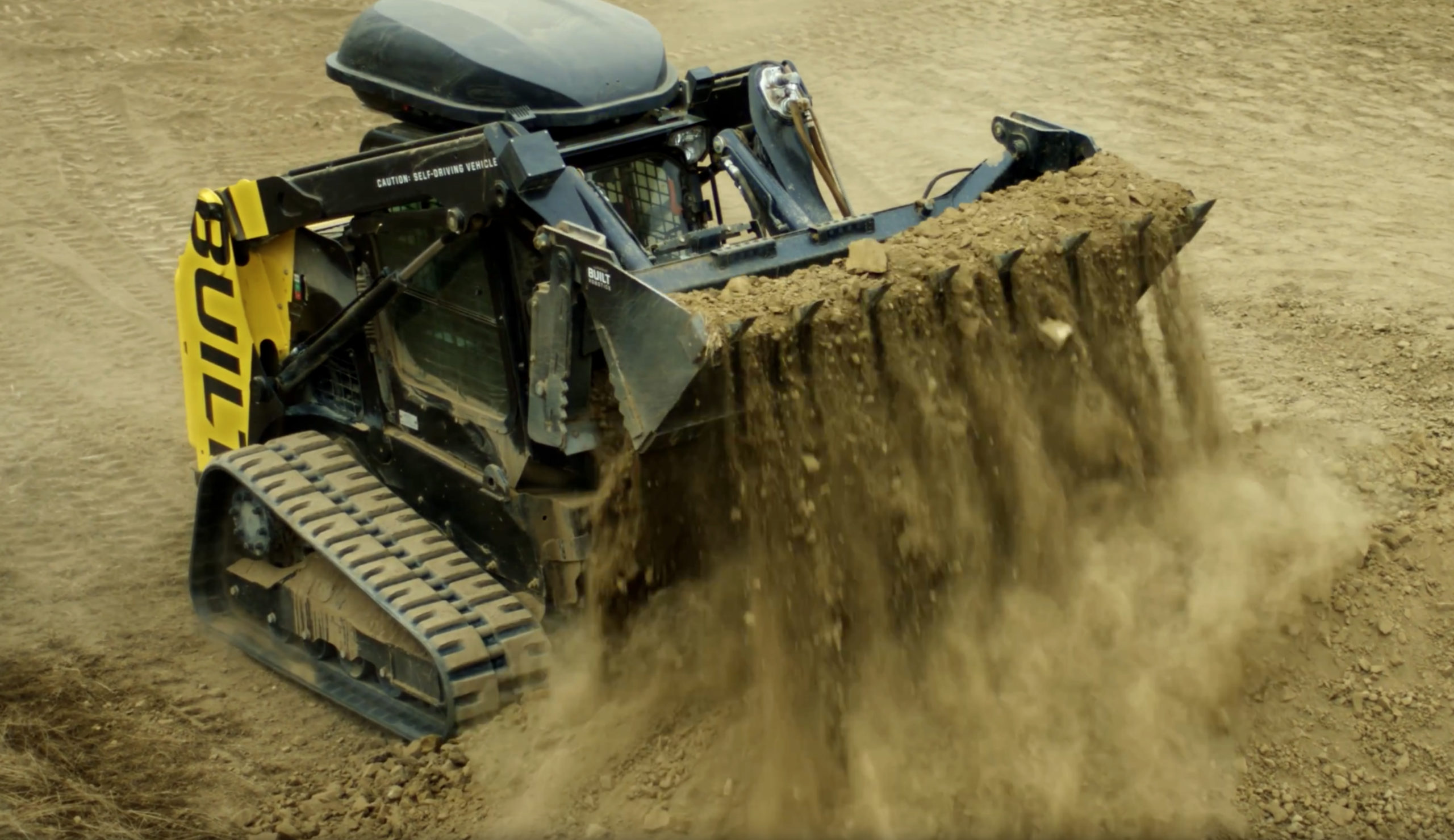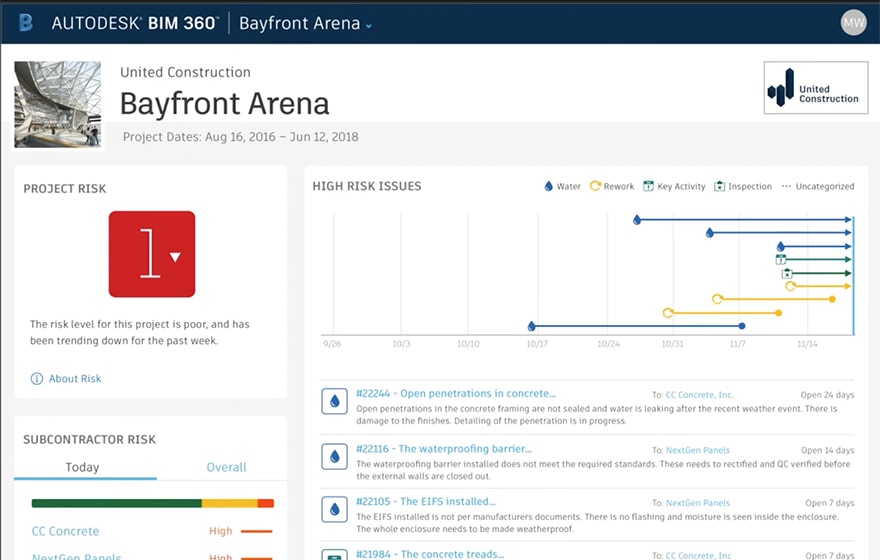
We train robots with data and they learn. And once we have let one robot learn, thanks to the cloud that means that 1,000 robots around the world can take that knowledge and do it themselves. Scale comes for free.– Tatjana Dzambazova, Autodesk
Tatjana Dzambazova, AI strategist at Autodesk, sets out her vision for how artificial intelligence (AI) and machine learning (ML) will impact the sector.
What jobs/tasks to do with design and construction do you think AI/automation will impact?
The spectrum of impact of AI and machine learning (ML) on design and construction is vast: it can range from incremental productivity improvements via automation of repetitive or laborious tasks to new paradigms for design, engineering, and construction.
The common thread between various types of new tools is that they will be data driven, they will be task and context aware and will translate the raw data into invaluable insights.
We see this journey as a transformation of our relationship with the tools we use from one that is directive – where we, the users, give the tools explicit instructions based on calculations and recipes – to being collaborative and symbiotic.
So, in the world of construction, ML-powered tools can offer new, more reliable, precise and faster ways to do field assessment, project cost, forecast demands, assess delays, determine if scheduling is realistic, do real-time risk prediction, assess subcontractor performance, plan better, and even move towards robotic construction.
Construction companies and subcontractors in the future can plan, predict and execute their jobs better and faster, and construction sites of the future will be less risky and less dangerous – they will be location aware, data aware, predictable and connected at all times.
What about design and engineering?
Given the ever-stricter regulations, performance expectations and growing global opportunities and challenges, data is increasingly driving our design decisions.
As we capture increasing amounts of data, our traditional tools simply can’t scale. New tools that can help process and make sense of that data – in the right context, at the right time – are needed. This is what a ML-trained tools will ultimately be able to do.
New approaches include ways to communicate design intent, new paradigms to start or develop a design, new ways to use real-time insights and real-world simulation, all through continuous collaboration between a human and a machine.
ML-empowered tools can not only help us be faster and more efficient, but they will monitor our actions in real-time and offer insights in context and when needed, augmenting our creativity and expertise beyond our imagination and knowledge.
How far, if at all, are we along this road of automation?
It’s important to understand the trends that allow this to happen now. The internet connects people, data and things. Big data generated by human input or captured by sensors is increasingly available on the cloud and infinite computing provides scalable computing power that can handle that data.
The recent confluence of these trends has created a fertile environment in which research in the AI/ML field can thrive. Industry-specific research like that at Autodesk is progressing in-step with the more fundamental work at the tech giants (Google, Amazon, Facebook, Microsoft, Intel, IBM).
But the world is way past research as there are already many real-time applications in various domains of life, some of which we use daily without being aware that they are AI-based, including phrase auto-complete, translation bots, medical and financial diagnostics, and autonomous vehicles – to name a few. Similar methods applied to the AEC world are coming along.
Read related AI Special articles
- How ‘learning’ building controls boost energy efficiency
- CIOB Digital Special Interest Group: ‘The potential is enormous’
- All you need to know about AI – now and in the future
When we talk about automation, we need to consider the changing role of both intelligent hardware (robots) and new types of software tools.
Traditional robots are great at automating repetitive or labour-intensive work, or tasks that are dangerous or physically impossible for us humans. They have served us well thus far, but mainly within a controlled factory environment. They are, however, quite constrained.
Robots today have to be specifically programmed to do a limited number of tasks in a specified environment. This is usually done by specialised personnel – requiring expertise and downtime of the robot. This is a big bottleneck and the very reason why robots haven’t been widely adopted by more industries.
It also limits the rate of iteration on a particular design and prevents mass-customised products being widely offered today.
Finally, the biggest limitation of traditional robots is that they are not really aware of the environment in which they operate and cannot respond to any changes or unpredicted events that usually would mean halt of a robot or a total breakdown. Traditional robots are also unaware of the nature of the task at hand but instead blindly follow a programmed recipe.
But we don’t have to restrict our robots to repetitive production line driven work. At Autodesk we are exploring how robots can be given more freedom to make things independently.
The way robots work no longer has to be so rigid and predefined. Thanks to sensing feedback and ML the robot learns from data and improves by doing, effectively building an understanding of the task at hand, rather than following a formula as they did in the past.
Robots become versatile tools that can perform a variety of work, and ML makes them responsive, adaptive, adjustable, predictive and self-improving. They become ready for use then in high rate changing environments that require variety of tasks – such as construction sites.
So, we train robots with data and they learn. And once we have let one robot learn, thanks to the cloud that means that 1,000 robots around the world can take that knowledge and do it themselves. Scale comes for free.
In our robotic lab in San Francisco, we are currently piloting a construction site robot that can install glass facade panels from the interior of a building, a task that is usually quite laborious and dangerous, especially when installing on upper floors.
We initially train the robot by having a human guide its movements via a VR set. Through this training the robot learns the nature of the task to find a glass panel in a certain area, to lift it in a certain way and place it in a recognisable location.
There is a lot of innovation in construction robotics all around the world: smart brick laying or rebar installation robots built at ETH Zurich, (NCCR Digital fabrication), robots that 3D print buildings (Xtree) or autonomous construction tractor robots (Built Robotics),

Construction tractors can be programmed to perform driverless tasks (Built Robotics)
When we talk about AI/ML-enabled software tools on the other hand, we imagine an assistant who is always with you, that can hold all the information you would ever need. An assistant that not only responds to questions or follow commands or automate repetitive tasks, but also offers insights and proactively helps with real-time suggestions, evaluations and predictions based on previous project data and experiences.
Not only your productivity and efficiency, but also your creativity will be augmented. Within the goals and constraints that you as a designer have defined, you will be offered numerous variations of a design solution, while being clearly informed about the trade-offs of each of the suggested variations.
Here we are talking about generative design that has taken off recently but this method, when augmented with machine learning and a feedback loop, has the potential to become a real trusted adviser of the kind we can’t even imagine.
Our first publicly available ML-powered tool that is focused on construction is BIM360 IQ.
BIM360 IQ uses machine learning to predict and prioritise high-risk issues, project subcontractor risk, and keep superintendents productive. It’s the perfect assistant to a superintendent on a construction site who can consult with it about the top issues for each day and how they rank in terms of priority or severity.

BIM360 IQ uses machine learning to predict and prioritise high-risk issues
IQ can also advise the superintendent of the performance grades of subcontractors and their historic data in order to make sure they pick the right teams. All this is possible thanks to historic data of more than 27 million documented issues from 10 years of BIM field data that were used to train the system.
We started BIM360 IQ by automating classification of the construction issues from the descriptions typed on site – think of “autocomplete” for the construction site.
Now we’re extending BIM360 IQ into vision, image analysis that helps classify and give real-time warnings about construction issues or safety directly from photos taken on site. The system would, for example, apply reasoning that a picture of a sill that’s damp underneath is most probably a water leak from a poorly-fitted window.
All of these are just beginnings – a lot is brewing in the innovation pot at the moment.
How is Autodesk developing its offering in this field?
Given today’s global opportunities and challenges, we believe that there can be no future planning of tools and workflows that don’t involve ML and AI. There are many challenges that our customers are facing today for which they need better, faster, smarter ways of working. ML and AI will enable scalable solutions for many of those challenges.
ML and AI play key roles in our current strategic planning at Autodesk. After evaluating the approach and opportunities in the past few years, we formalised our commitment by creating an AI Institute here at Autodesk that partners with leading academic and industrial laboratories. Here, AI researchers and engineers extend design-make-build workflows with AI techniques, building proof of concepts together with forward-looking customers.
The vast knowledge that we have been gathering and learning from in the past 30 years of serving AEC, MFG and M&E industries puts us in a unique position to train ML systems to learn so that they can not only help and assist us, but later teach us a few things.
These tools will turn historic or real-time data of any kind into invaluable insights that we as professionals would have always wished to have but was either too cumbersome or time-consuming to gather, or impossible to process.
While these technologies offer a new, unique approach to solving problems, the AI/ML approach is still just one more tool in a professional’s toolset. In my opinion, the best AI/ML projects are those that are transparent to the users.
We don’t need to call them out as “AI-powered”. They will simply help make our tools better, smarter, more intelligent so they can serve designers, engineers and construction professionals better. And that is ultimately what matters.











